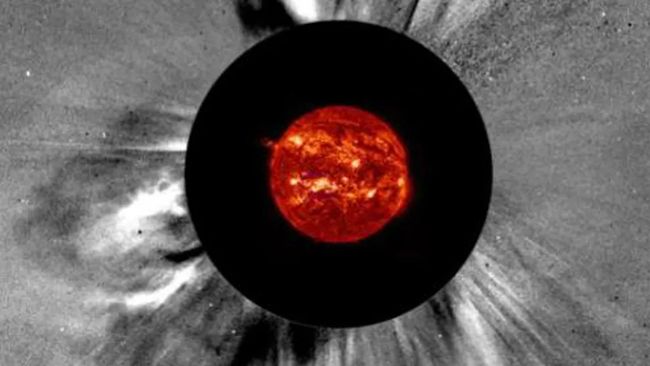Incoming Giant Geomagnetic Storm: Anticipated Surge to Illuminate Northern US Skies with Dazzling Auroras
Earth’s mesmerizing light displays may soon be triggered as the magnetic field of the sun collides with our own.

Officials have reported that the sun has emitted a mass of plasma towards Earth, potentially leading to a geomagnetic storm in our planet’s magnetic field. This event could result in breathtaking aurora displays, particularly in the northern and upper Midwest states of the United States, on January 22 and 23. The National Oceanic and Atmospheric Administration’s Space Weather Prediction Center has provided this information.
Solar flares, which are intense bursts of electromagnetic radiation originating from the sun’s atmosphere, can propel magnetized plasma bubbles into space. These bubbles, known as coronal mass ejections (CME), are highly energetic and expand outward. When they collide with Earth’s magnetosphere, the magnetic field that surrounds our planet and shields it from the most severe effects of space weather, a geomagnetic storm can occur. During this storm, the energized particles from the CME ionize oxygen and nitrogen molecules in the atmosphere, resulting in vibrant auroral displays.
While these storms may occasionally disrupt satellites and certain ground-based infrastructure, the National Oceanic and Atmospheric Administration assures the general public that there is no cause for concern.
The anticipated geomagnetic event is projected to be a G2 storm, the second-lowest classification. This suggests that the chances of witnessing auroras are highest in Alaska and Canada, as indicated by the near-real time aurora forecast from NOAA.
Nevertheless, the forecasts indicate that numerous states in the United States, including Vermont, Minnesota, and Wisconsin, also have the opportunity to observe these mesmerizing lights on Monday and Tuesday.
This solar eruption occurred as the sun is rapidly approaching the peak of its current cycle, Solar Cycle 25, which officially commenced in 2019. In June 2023, Live Science reported that the peak of solar activity, known as solar maximum, would arrive earlier than initially predicted. Additionally, in October, experts at the Space Weather Prediction Center released a “revised prediction” for the ongoing solar cycle, stating that solar maximum would occur sooner and be more explosive than previously anticipated.
During this peak period, NOAA states that we should anticipate an increase in sunspots, which are regions of intense magnetic activity capable of generating solar flares and coronal mass ejections. This turbulent phase could persist for several years and contribute to potent space weather events that may trigger radio and satellite disruptions.
This article is republished from SpaceCom under a Creative Commons license. Read the original article.
Do not forget to share your opinion with us to provide you with the best posts !




0 Comments